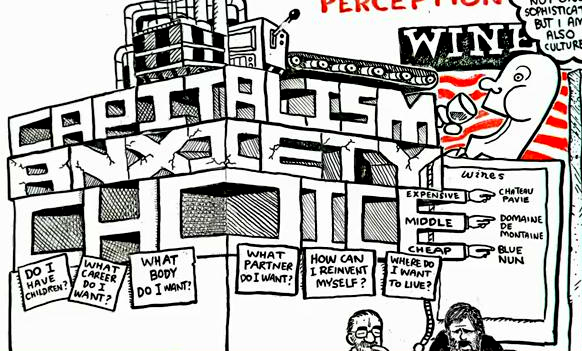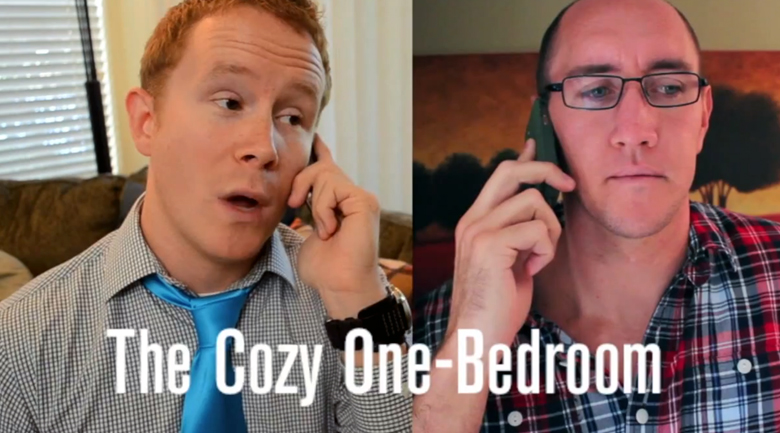The cornerstone of real estate is choice
The cornerstone of the real estate industry is the idea of having a choice. Consumers have a choice regarding whether or not they use an agent to buy or sell, who their buyer’s or seller’s agent is, how to find those agents and contract with them and even what that representation agreement looks like. Consumers can choose a brokerage that offers refunds over one that does not, or they can choose a full service brokerage versus a “pay to be in the MLS” model. Listing clients can choose whether or not their home is featured online, in video, in print and the like, and above all, consumers can choose to fire their agent and withdraw from the market if they wish. Consumers can choose what part of the world to live in and can do tremendous amounts of research online before they ever even contact an agent, they can drill down to areas or subdivisions based on their preference in schools, urban versus rural locations, nearby amenities or proximity to work. Then, they can choose the red house over the blue house or the two story over the one story, some have a lender friend they’ve chosen or a title buddy they demand to work with and so on and so forth.
There are a lot of choices to be made in the real estate process and one would think that the endless choices and options offered to consumers like a buffet line would be empowering, but according to the RSAnimate video above, illustrating Professor Renata Salecl’s exploration of limitless choices, this prospect can be paralyzing and full of anxiety leading ultimately to dissatisfaction.
Choices can be paralyzing
According to Dr. Salecl, choice ultimately prevents social change which seems counterintuitive as the very idea of choice is about liberating people, but her analysis as illustrated above is logical, especially in America where we are so drawn into ourselves that we implode at the mere concept of organizing for social change.
Granted, the above video is borderline propaganda for unions, we encourage you to take a look at it from a different perspective and that is that consumer choice is a part of our society and while we are all hopping on to Twitter to be present as they make those choices, part of being a trusted advisor is taking the stress out of those choices.
A wise Realtor and my mentor used to say to clients at the onset of their transaction, “this process is going to look extremely easy, and that is how you know I’m doing my job well.”
Lani is the COO and News Director at The American Genius, has co-authored a book, co-founded BASHH, Austin Digital Jobs, Remote Digital Jobs, and is a seasoned business writer and editorialist with a penchant for the irreverent.








































Benjamin Ficker
June 27, 2011 at 1:45 pm
I like the video, but I don't agree with what she is saying. Of course, there is the paradox of choice. When you have too many choices, you fail to act (https://goo.gl/xMSkS).
But the idea that I get to blame everybody but me is crazy. Many times when people are fired from their job it IS something they did. Of course there is downsizing, stuff out of your control, etc but more often then not it is because someone isn't meeting expectations.
What I LOVE about real estate is that my successes AND failures are on me. Nobody else. Yes markets change,but it is MY choice how I react to that. This market has brought me more business then I know what to do with. For others, they are out of the business working 9-5.
Ruthmarie Hicks
June 27, 2011 at 2:27 pm
Although the purpose of the video was obviously different – the point is very applicable to this particular market. One of the hardest things I find I have to do is to push for a DECISION. You can't let them get away with total procrastination. They have to decide – to move ahead or not. To offer a fair price – or not, to counter fairly – or not. If you don't make a decision – you are still making a decision.
Brad | Home Loan Artist
June 27, 2011 at 3:50 pm
Interesting video…..this is why I majored in Psychology knowing full well I would never go into the field.
I like that quote: "A wise Realtor and my mentor used to say to clients at the onset of their transaction, “this process is going to look extremely easy, and that is how you know I’m doing my job well.”
I've always been fascinated with the idea that most clients are not aware of all the details that go on behind the scenes of a real estate transaction……and I'm thinking from a loan perspective.
If they don't know how difficult it can be to get to funding a loan, how will they ever appreciate (or place value) on your ability to make it easier than if they had worked with someone else? They will never know if the grass they are standing on is actually greener because they have never worked with another person to secure financing…or buy a home. Thus even one small obstacle can cause them to think another lender or person wouldn't have required me to satisfy that condition.
And if the last time they bought a home was between 2001 and 2007, no matter how good I do or simple I make it…..it will always seem more difficult than when they did their stated/stated no doc loan.
When you tell them how good of a job you are doing, it looks like you defending your self….like you did something wrong.
Jay
June 27, 2011 at 11:20 pm
I agree that when presented with too many varying options, it can be overwhelming, while no choice or too limited of a choice is problematic as well. Take cable TV for example, they package a lot of good content with a lot of junk. What is needed is a way to filter out what you don't want with the things you do want. In short, presnet people options, but also give them the tools necessary to deal with the options. Give them a way to narrow the options so that they can see the things that are important to them and ignore those that are not.
In fact, that is exactly what we do with our iPhone app, House Hunter. We provide home buyers with a way to identify all the home features that are important to them and give them a way to share that with their agent. Now their agent can then use that data to narrow down the choices so that they show client those homes that best match their needs.
Check out our FB page to see how it works and how it might help you as an agent, help your customer.
https://www.facebook.com/Cre8tiveApps
Regards,
Jay Taylor